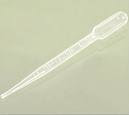VOLUME
What is the definition of volume?
Volume is a measure of the space occupied by a substance. The SI unit for volume is cubic meter.
Volume is a measure of the space occupied by a substance. The SI unit for volume is cubic meter.
Some other units of measurement for volume include'
Cubic centimetre
Cubic millimetreCubic kilometre
To find the volume of regular-shaped objects, the following formula could be used'
Cube= length x length x lengt
Cuboid= Length x breadth x height
Below are some of the instruments used for measuring the volume of liquids;
1. Measuring flask
2. Burette
3. Pipette
4. Measuring cylinder
(1) Measuring Cylinder.
The measuring cylinder has an accuracy of 1 cubic centimetre. (Various volumes)
(2) Burette.
A burette has an accuracy of 0.1 cubic centimetre. The burette can only measure a maximum of 100 cubic centimetre of liquid.
(3) Pipette.

The pipette has a fixed volume of 25 cubic centimetre or 50 cubic centimetre.
(4) Measuring flask.
The measuring flask has a fixed volume of 250 cubic centimetre or 500 cubic centimetre.
Besides using the above apparatus, we also can use a beaker, syringe and test tubes.
Meniscus reading
a. The meniscus of most liquids curve downwards.
b. The correct way to read the meniscus is to position your eye such that your eye is at the same level as the meniscus.The mark coresponding to the bottom of the meniscus is taken as the reading.
Measuring the volume of irreregular-shaped objects
Small irregular-shaped objects
a. Fill a measuring cylinder partially with water and record the initial volume.
b. Immerse the object into the measuring cylinder gently so that it is all covered.
c. Record the new volume.
d. The volume of the object is the initail volume minus the new volume
Large irreregular-shaped objects
a. Fill the displacement can with water until excess water stops flowing out of its spout into a beaker.
b. Remove the beaker when the water stops flowing.
c. Place an empty measuring cylinder below the spout of the displacement can.
d. Immerse the object into the displacement can gently so that it is completely filled with water.
e. When the water stops flowing into the measuring cylinder, observe and record the volume of the water displaced by the object and collected into the measuring cylinder.
Results - The volume of the object is the volume of water in the measuring cylinder.






No comments:
Post a Comment